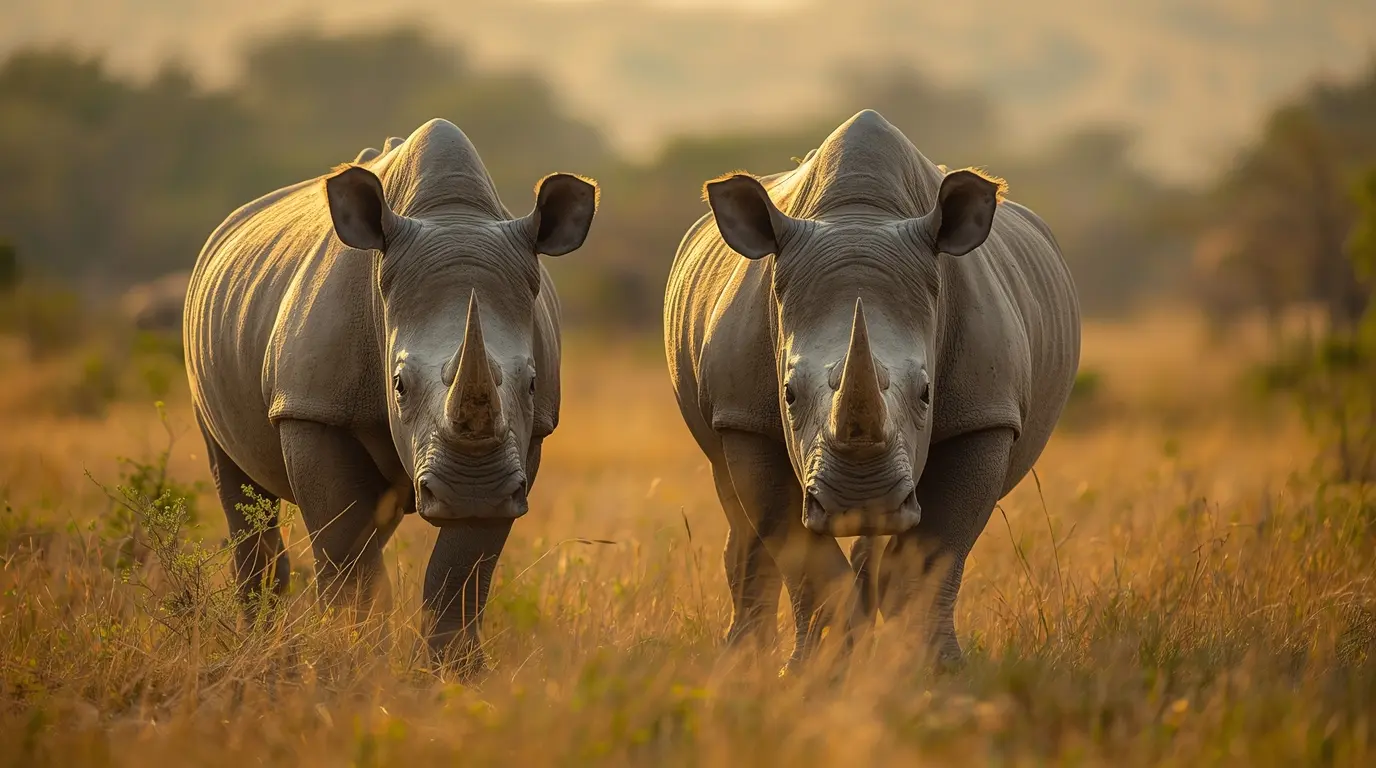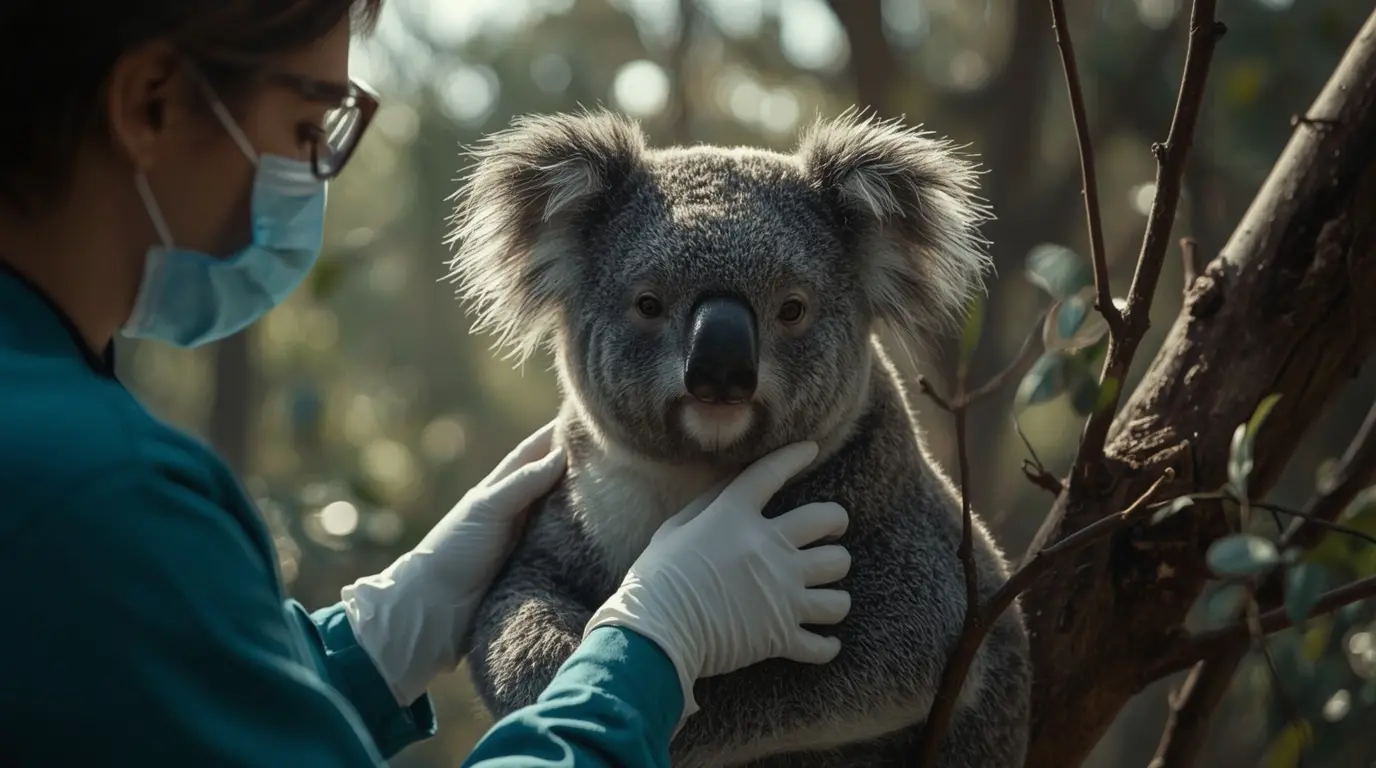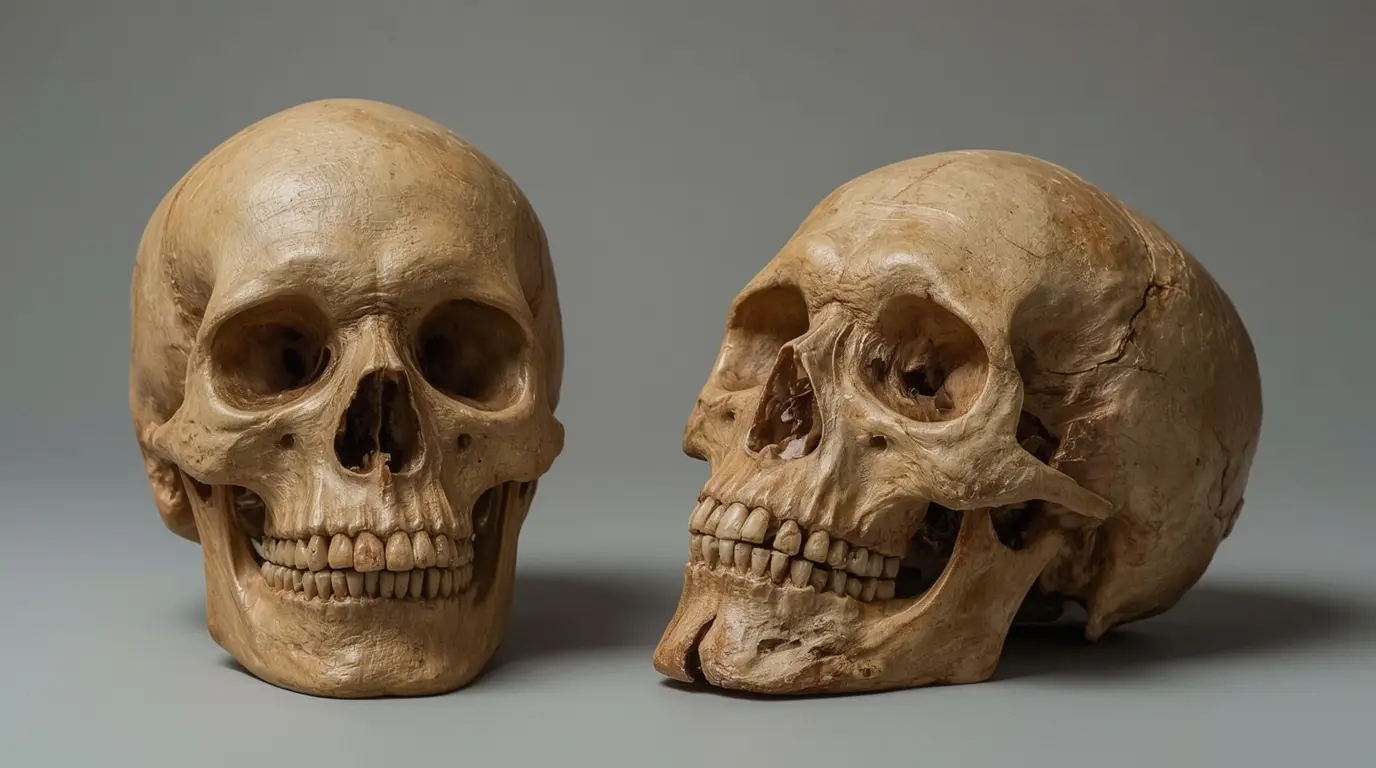Introduction: A Species on the Brink
The northern white rhino illustrates the ongoing conservation challenge at the intersection of people’s actions and the environment. This subspecies has all but vanished. Along with ongoing intensive protection, the last two females—Najin and Fatu—are kept under armed guard in Kenya’s Ol Pejeta Conservancy. Much of the world has turned its attention to 2025. This year could decisively influence the ongoing battle for the subspecies. There is now a fully mapped genome and embryos created, stoking some degree of optimism that the northern white rhinos might be rescued.
The Genomic Breakthrough
Angalifu the Male, a northern white rhino that died in 2014, could be referred to as a savior for his subspecies. A team of scientists comprising Scripps Research, the San Diego Zoo Wildlife Alliance, and the Max Planck Institute had a breakthrough Angalifu’s cryopreserved skin cells. His cells provided the team the capability to achieve complete genome sequencing and, as a result, fully sequencing the genome of the northern white rhino. For future offspring, stem cells intended to generate sperm and eggs will be tested for viability against the genome map created. This roadmap will greatly enhance the chances of more accurate gene editing to be performed.
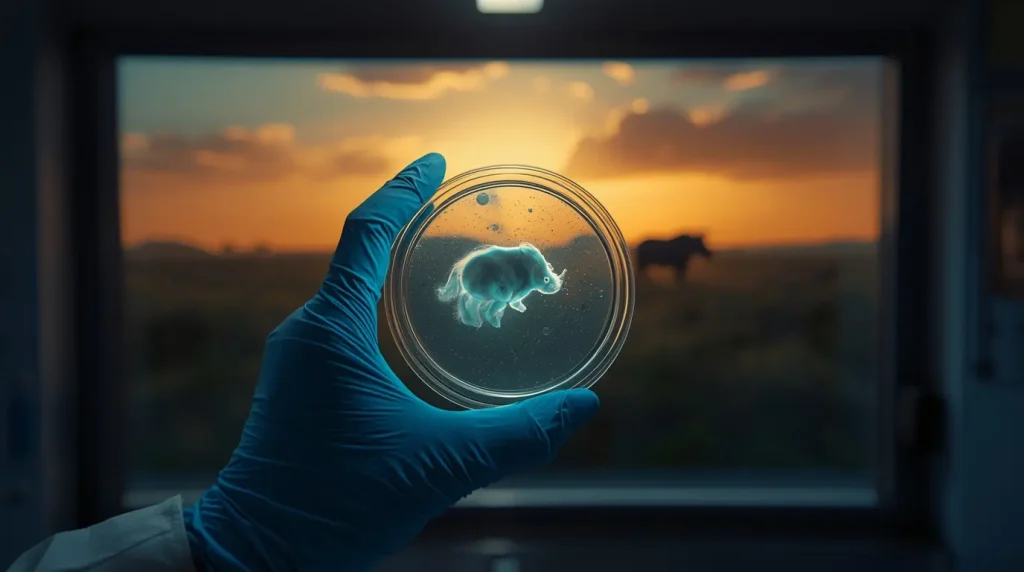
This breakthrough is more than academic; it’s a practical tool. By contrasting existing stem cell lines with the reference genome, researchers pinpointed critical mutations that might undermine reproduction attempts. For example, one stem cell line contained a deletion of over 200 genes, key for both reproduction and tumor suppression. This genome enables risks to be uncovered that would otherwise go undetected.
The BioRescue Project: From Embryos to Surrogacy
The BioRescue consortium, spearheaded by the Leibniz Institute for Zoo and Wildlife Research, has generated 38 pure northern white rhino embryos, the most recent three in 2025. These embryos were generated with oocytes harvested from Fatu and sperm from deceased males, via in vitro fertilization in Italy’s Avantea laboratory. The end goal: implantation of these embryos into southern white rhino surrogates. This subspecies is genetically closely related to northern white rhinos, as confirmed by the new genomic data.
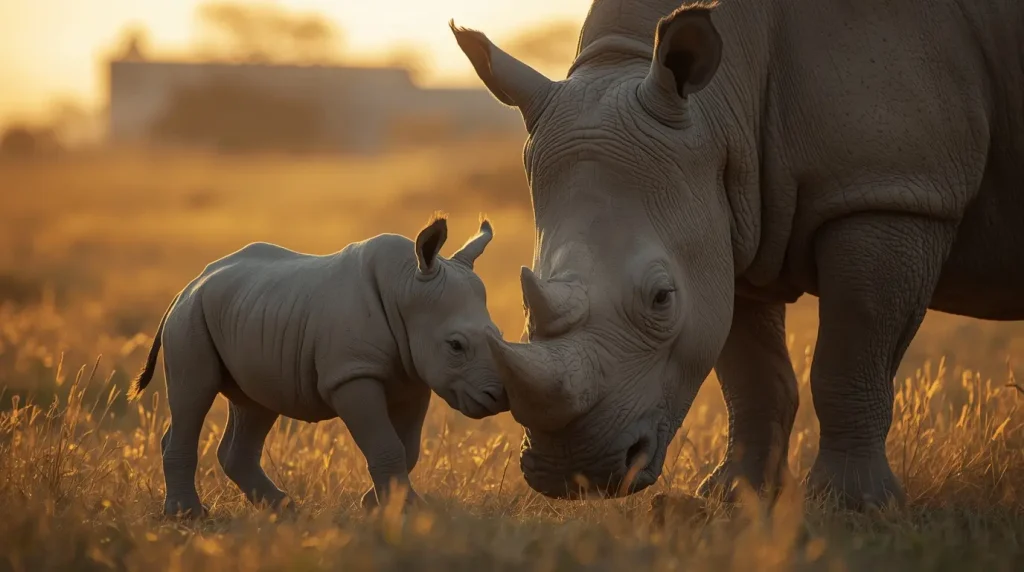
The team is still facing some challenges as well; no successful pregnancies from initial transfers in 2024-2025. However, these attempts, as unsuccessful as they might be, help collect very important information. The team is also very persistent, which shows a lot of resemblance to the NASA Apollo 13 mission with the “Failure is not an option” mentality.
Why White Rhinos Are Important for Tourism and Ecosystems
More than mere symbols, White Rhinos hold ecologically profound importance as a keystone species that reshapes entire ecosystems. The grazing habits of White Rhinos create “rhino lawns” which sustain various species, including ground-nesting birds and tortoises. Their wallowing behavior creates water holes which helps entire animal communities. Economically, these Rhinos are monolithic for wildlife tourism and economically for local communities. Their probable disappearance poses an economic threat that can reduce tourism revenue by 20%.
Ethical and Practical Issues
Critical thinkers pose an argument questioning if focusing resources on thrivable species is a better approach as opposed to biomechanical makeovers. Still, advocates are putting forward an argument which states this is a moral cause, a human-influenced extinction event that needs attention. White Rhinos are the center of this controversy making the idea of pseudopregnant surrogates using stem-cell derived gametes to other radical endangered species possible.
Community and Global Responsibility
Local communities take the forefront for conservation. Namibia rhino viewing and low footprint tourism and conservation Namibia enhance protection while lessening human interference. These movements demonstrate how authoritative global cooperation is for the northern white rhinos.
Conclusion: A Sign of Optimism
The continuing effort towards preserving the northern white rhinos is capturing the imagination of many. As is shown in the documentary The Last Rhinos: A New Hope from National Geographic, which aired in August 2025, this effort is marrying modern biology with commitment. The advancements in community driven conservation are genomics, embryology, and community driven conservation is certainly encouraging, there is still work to be done in capturing other species that are nearing extinction.
Humans still possess the ability to undo the damage inflicted, and the northern white rhinos still have the possibility of being released into their natural habitat which would be a remarkable milestone in conservation.
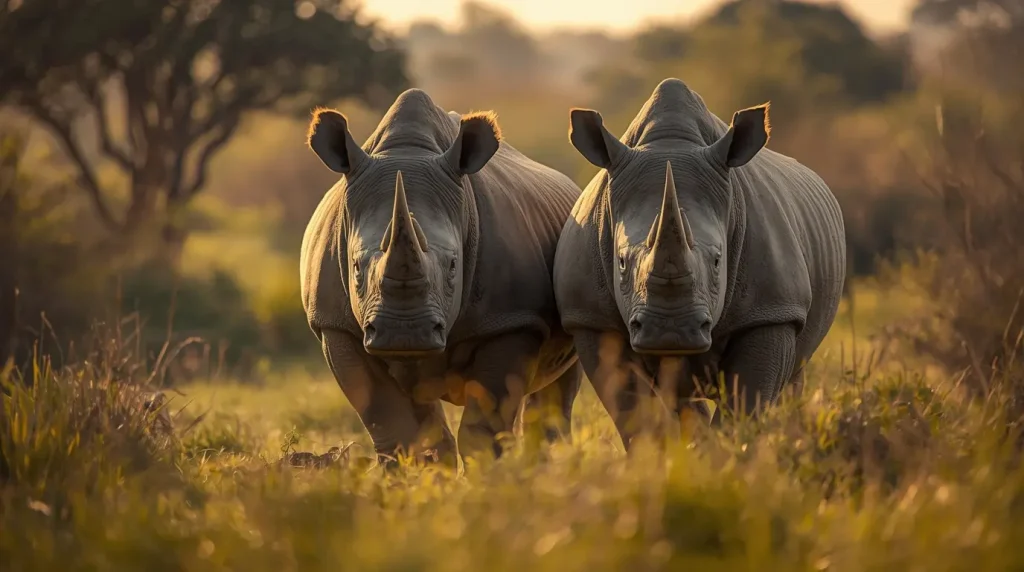
Actions to Help in Rhino Conservation
- Make a donation to the San Diego Zoo Wildlife Alliance’s Frozen Zoo® and the BioRescue Project.
- Avoid Touristic companies that are unwilling to assist with ethical wildlife conservation.
- Advocate for a Wildlife Trafficking Ban and call for more conservation finance transparency.
Source: https://edition.cnn.com/science/northern-white-rhinos-national-geographic-documentary-c2e-hnk-spc
For more incredible stories of everyday news, return to our homepage.

